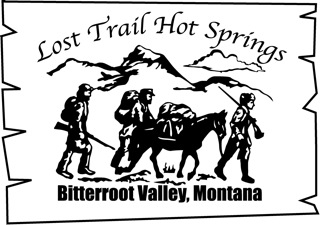In 1885, Jim Lord, Ed Lord and son moved from Rye Creek to Ross Hole. That summer they hired a mower and rake from Mr. Harlan of Como and cut hay all over the basin where the grass was high enough. They cut forty tons of hay — this was the first haying done in Ross Hole.
The winter of 1886-1887 was when so many cattle died in Montana, Wyoming and the Dakotas. The Lords got discouraged and decided to sell out and go back to Kansas. That was the winter that Charles Russell painted his famous picture, “Waiting for a Chinook.” In the Spring of 1887, Long-Haired Thompson came to Ross Hole. He bought the Lord place for $450. A baby girl was born to the Thompsons while they lived here. Her name was “Ursula” — Sula for short. When we finally got a post office, it was called Sula, as she was the first white child born in the Basin.
The first settlers never had any mail unless someone went to Como. In 1890, Jeff Whitesell used to bring the mail once a month and charged each family a dollar a month. In 1891, Will Wetzsteon was appointed postmaster. A few years later Scott Sherrill was appointed. He sent a petition to Washington to have the name changed to Sherrill, but another petition was sent in protest and it was left SULA.
